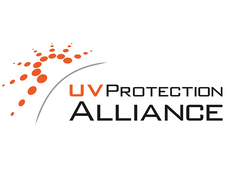-
Topics
Subnavigation
Topics
Electromagnetic fields
- What are electromagnetic fields?
- High-frequency fields
- Radiation protection in mobile communication
- Static and low-frequency fields
- Radiation protection relating to the expansion of the national grid
- Radiation protection in electromobility
- The Competence Centre for Electromagnetic Fields
Optical radiation
- What is optical radiation?
- UV radiation
- Visible light
- Infrared radiation
- Application in medicine and wellness
- Application in daily life and technology
Ionising radiation
- What is ionising radiation?
- Radioactivity in the environment
- Applications in medicine
- Applications in daily life and in technology
- Radioactive radiation sources in Germany
- Register high-level radioactive radiation sources
- Type approval procedure
- Items claiming to provide beneficial effects of radiation
- Cabin luggage security checks
- Radioactive materials in watches
- Ionisation smoke detectors (ISM)
- Radiation effects
- What are the effects of radiation?
- Effects of selected radioactive materials
- Consequences of a radiation accident
- Cancer and leukaemia
- Hereditary radiation damage
- Individual radiosensitivity
- Epidemiology of radiation-induced diseases
- Ionising radiation: positive effects?
- Radiation protection
- Nuclear accident management
- Service offers
-
The BfS
Subnavigation
The BfS
- Working at the BfS
- About us
- Science and research
- Laws and regulations
- Radiation Protection Act
- Ordinance on Protection against the Harmful Effects of Ionising Radiation
- Ordinance on Protection against the Harmful Effects of Non-ionising Radiation in Human Applications (NiSV)
- Frequently applied legal provisions
- Dose coefficients to calculate radiation exposure
- Links
The UV Protection Alliance
The Federal Office for Radiation Protection (Bundesamt für Strahlenschutz, BfS) coordinates the interdisciplinary "UV Protection Alliance". The Alliance is a cooperation of well-known societies, organisations and authorities from radiation protection, medicine, science and occupational safety who are committed to UV protection for years. The Alliance advocates for a responsible handling with UV radiation. Objective of the Alliance is to reduce in the long term the number of new skin cancer cases and other adverse health effects caused by UV radiation. Since its foundation in 2012, the number of partners in the UV Protection Alliance has increased. Currently (March 2023 status) following 31 companies, organizations and authorities cooperate.
Why a UV Protection Alliance?
In spite of the proven health risks of UV radiation, the appropriate UV protection is still not a matter of course. The risk remains underestimated.
Networking of the main players in the field of UV protection is an important step towards an improved risk perception of the public. Joint statements and recommendations issued by many well-known organisations, institutions, associations and societies in science, medicine and health education are more effective than the same message coming from single actors with different wording.
What does the UV Protection Alliance do?
The Alliance partners work on the basis of a jointly supported Memorandum of Understanding on Cooperation. During interdisciplinary expert talks, the Alliance partners discuss the current state of scientific knowledge, pool the findings on the effects of and the protection against UV radiation and prepare generally understandable information on health consequences. The Alliance partners also develop practicable UV protection measures and promote their implementation for a meaningful and effective UV protection.
In 2017, the Alliance published the position paper "Prevention of health damage caused by the sun - Structural prevention in urban and rural areas".
Structural prevention aims to change the technical, organizational and social conditions of the social setting and the environment in order to prevent diseases. To avoid health damage caused by too much sun, the living and working environment of people should be designed in such a way that all those who are outdoors can avoid high UV exposure and also - as far as possible with UV-minimising measures – heat stress. Thus, for example shade-providing places can be set up, and daily routines as well as work processes can be adapted to the current UV exposure. The public display of the current UV index (sunburn-effective UV irradiance) can be helpful in doing so.
With this paper, the UV Protection Alliance addresses the relevant decision-makers, including ministries and authorities at federal and state level, social insurance carriers, trade unions, employer' liability insurance associations, organisations of employers, responsible bodies of public institutions, training or training-coordinating organisations as well as the media. The aim is to establish protective measures against high UV exposure outdoors in a joint co-operation and by using the means and possibilities available to the individual addressees.
State of 2024.07.31





